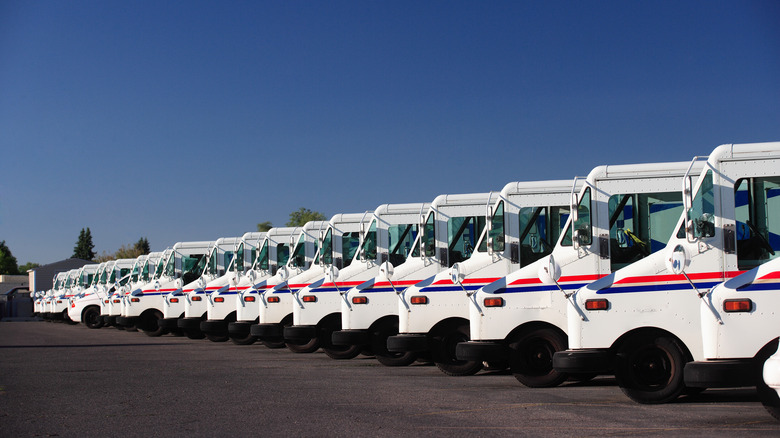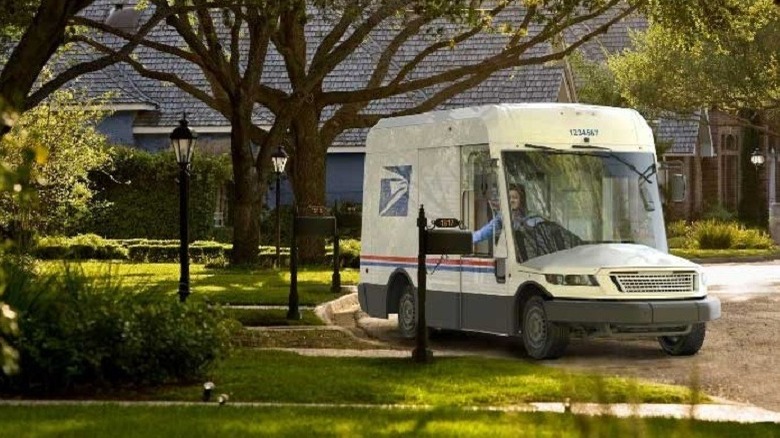The USPS' Plan For EVs Is As Ambitious As It Is Weird-Looking
For nearly three decades, the US Postal Service (USPS) has depended on its 100,000-strong fleet of Grumman Long Life Vehicle (LLV) as its primary mail delivery vehicle. The vehicle — a familiar sight on U.S. and Canadian roads — was made by Grumman Aerospace Corporation. Strange as it may sound, the production window for the LLVs lasted just seven years (1987-1994), meaning that even the newest LLVs in operation are close to 30 years old. The USPS initially intended to use the LLVs for at least 20 years. However, with no replacement vehicles in sight, even by the 2010s, the USPS decided to extend LLV's lifespan by another decade. With 2024 barely a year away, most LLVs are fast approaching retirement age and need replacement.
In 2021, we finally knew what the replacement for the LLV would look like after the USPS awarded a contract to Oshkosh Defense for the Next Generation Delivery Vehicle (NGDV). The USPS initially wanted Oshkosh Defense to make anywhere between 50,000 and 165,000 awkward-looking NGDVs over a 10-year period. However, these plans quickly ran into trouble — and drew sharp criticism — after it was revealed that most of these vehicles would have been powered by an internal combustion engine. Making things even worse, the expected fuel efficiency on the NGDV was just 8.6 mpg — hardly an improvement over LLV's figures. The USPS was also blamed for squandering an opportunity to go electric.
Today, the USPS made a significant change to its original plans and announced that it is increasing the number of EV NGDVs to 60,000 units by 2028.
All NGDVs delivered post-2026 to be all-electric
The USPS' grand plan for switching to a nearly all-electric fleet has been enabled by an additional $3 billion worth of congressional funding it received under the Inflation Reduction Act (IRA). In a press release, the USPS confirmed that this figure is over and above the original budget of $6 billion. According to the USPS, this additional funding will let them modernize their fleet with a faster deployment rate of EVs, and improve its overall financials.
If things go as the USPS has planned, the organization expects 45,000 of its 60,000 NGDV to be battery-electric powered — making nearly 75% of its fleet battery electric in the next few years. Aside from these 45,000 vehicles, the USPS also plans to acquire an additional 21,000 Commercial Off-The-Shelf (COTS) vehicles that will also be battery-electric. The press release also adds that electric motors could power all USPS vehicles delivered from 2026 through 2028. However, there will be some ICE-powered purchases between 2023-2026 to meet the USPS' immediate demands. The USPS has also confirmed that it is exploring the feasibility of switching to an all-electric Postal Service delivery fleet in the future.
In addition to these changes, the USPS is expected to publish a supplemental EIS (Environment Impact Study) by March 2023. This study will assess the environmental impact brought about by the new direction in which the organization intends to move. Incidentally, we also expect the first of the NGDVs to start servicing select postal routes before the end of the same year.

